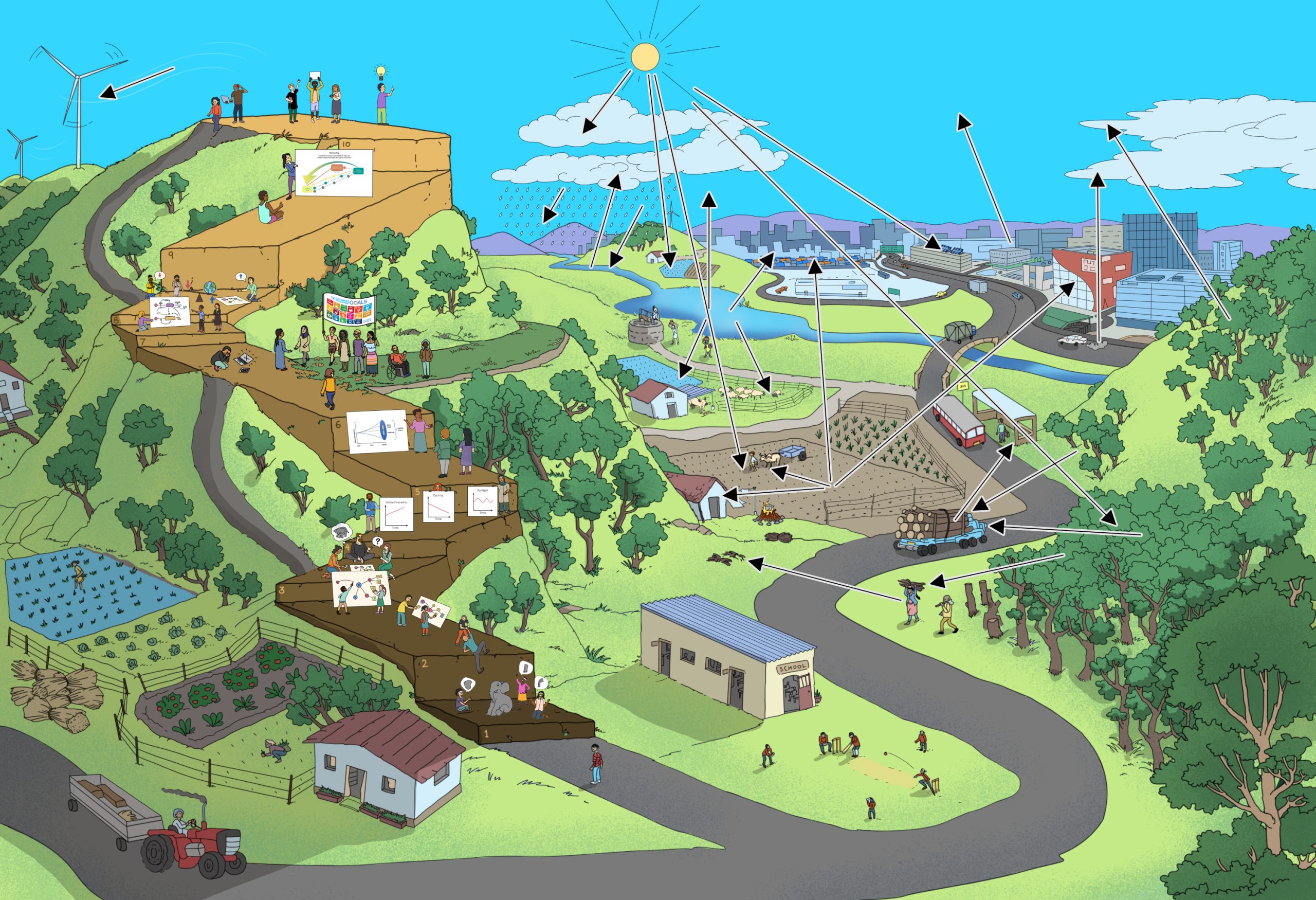Systems thinking is the ability to describe and/ or visualize a part of a complex reality, express that part of reality as a model, understand the model as a system, use the model to explain the behaviour of the system, anticipate the behaviour of the system, and evaluate its impacts on sustainable development, identify potential points of, and types of interventions, generate options to act, assess their impacts in the frame of sustainable development, and decide whether further actions are necessary or not.
What is the aim?
To enable learners to:
- explain the past behaviour over time of the system of the chosen topic.
Activities, tasks, and suggested learning methods
- Share again the Jeans model representing the production and use of cotton, as depicted in Figure 3 (in Step 3). The system is geared to continue to produce more cotton.
To cross-check this, see the video ‘Top Cotton Producing Countries from 1960 to 2019 available at https://youtu.be/naY1xBwk_rk.

- Introduce the concept of Behaviour over Timeand that it can be plotted as a graph. Ask the learners, which graph best matches the trend of production of cotton over the last few decades?

- Use the methodThink, Pair, Share to involve the learners in preparing descriptions of the system’s past behaviour. They should discuss any one of the following questions and, through their answers, try to develop an understanding of the behaviour of the system in the past:
- Have jeans always been as popular as today?
- What has changed from the last century in the ways or the reasons that people wear jeans today?
- Ask the learners to think about the behaviour over time with regard to certain other elements and draw graphs representing these changes over time. They may discuss, for example, the trends of:
- Farmland acreage used for cotton farming
- Use of fertilizers in cotton farming
- Use of genetically modified varieties of cotton
For these different activities, learners may be supported by learning methods such as:
Further leading questions
- What will happen or what situation may arise in the future if people and different actors in the Jeans system continue to behave as they have done over the last several years? Encourage the learners to think about this question with reference to specific elements, such as soil quality, or farmers’ incomes, or waste materials in the environment.
- How do the current systems of production (of raw materials) and consumption (or use of jeans) affect and keep up with the demand for jeans and the evolution of fashion? How do different actors deal with the availability of land for cultivation? Is there a scarcity of cultivable land?
- What is the environmental impact of the system of cotton and jeans production and use?
- How is the social status of people influenced by the ways of consumption?

